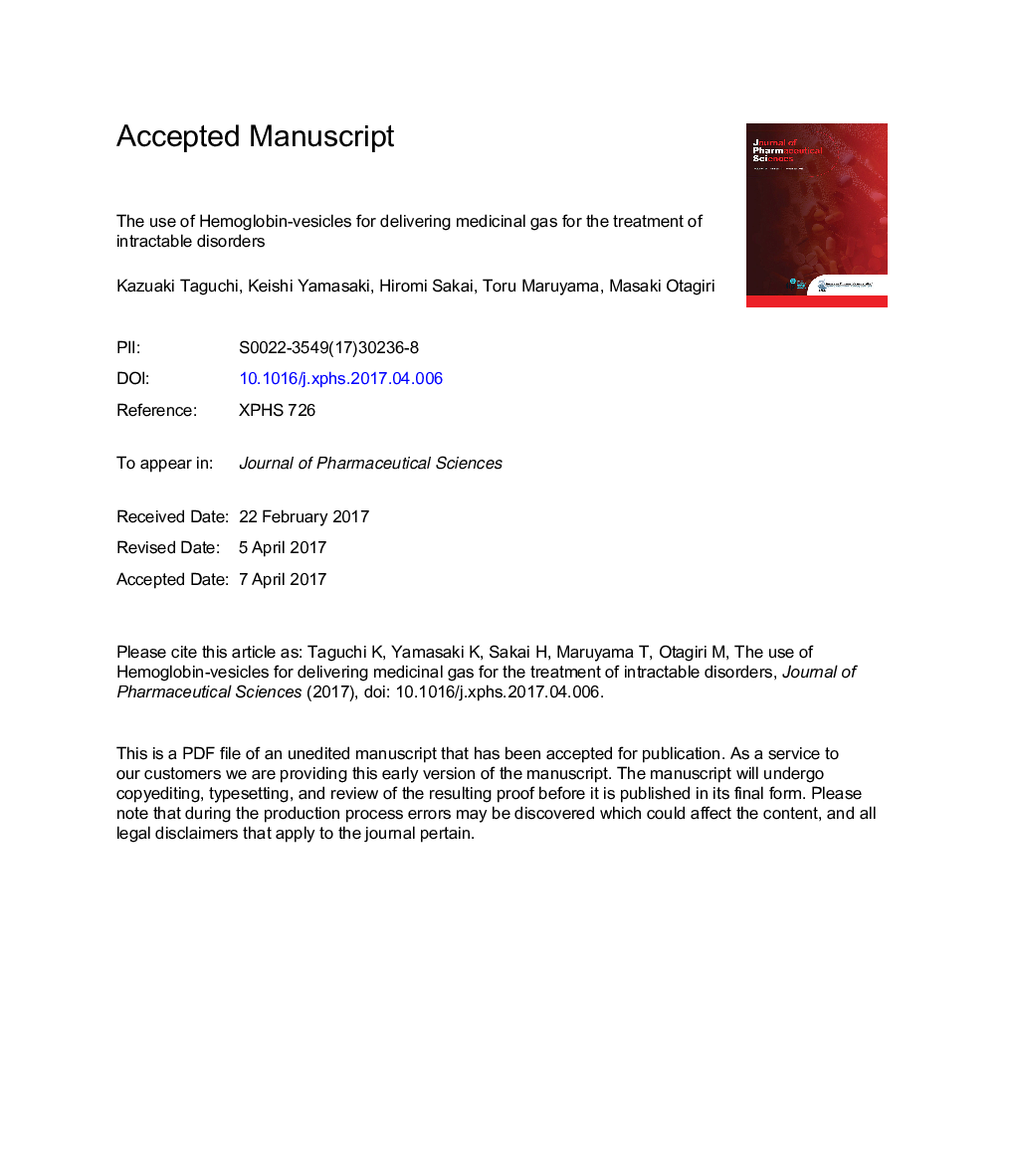| Article ID | Journal | Published Year | Pages | File Type |
|---|---|---|---|---|
| 8513924 | Journal of Pharmaceutical Sciences | 2017 | 43 Pages |
Abstract
Bioactive gaseous molecules, such as oxygen (O2) and carbon monoxide (CO), are essential elements for most living organisms to maintain their homeostasis and biological activities. An accumulating body of evidence suggests that such molecules can be used in clinics as a medical gas in the treatment of various intractable disorders. Recent developments in hemoglobin-encapsulated liposomes, namely hemoglobin vesicles (HbV), possess great potential for retaining O2 and CO and could lead to strategies for the development of novel pharmacological agents as medical gas donors. HbV with either O2 or CO bound to it has been demonstrated to have therapeutic potential for treating certain intractable disorders and has the possibility to serve as diagnostic and augmenting product by virtue of unique physicochemical characteristics of HbV. The present review provides an overview of the present status of the use of O2- or CO-binding HbV in experimental animal models of intractable disorders and discusses prospective clinical applications of HbV as a medical gas donor.
Keywords
DSSPLPCMRO2P50HIF-1αRBCIBDSIRSIPFBiomimeticsO2 affinitypyridoxal 5'-phosphateIL-6ROSETKControlled releaseParticle sizeOxygeninterleukin-6Inflammatory bowel diseasetumor necrosis factor-αSystemic inflammatory response syndromeDextran sulfate sodiumhypoxia-inducible factor 1αTNF-αNanotechnologyidiopathic pulmonary fibrosisLiposomescarbon monoxideCO-releasing moleculesNitric oxideHemoglobinHBVCormsred blood cellReactive oxygen species
Related Topics
Health Sciences
Pharmacology, Toxicology and Pharmaceutical Science
Drug Discovery
Authors
Kazuaki Taguchi, Keishi Yamasaki, Hiromi Sakai, Toru Maruyama, Masaki Otagiri,
